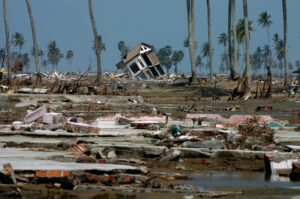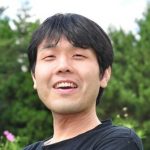ADN’s Special Session on International Day for Disaster Risk Reduction: Early Warning and Early Action for All
This page contains the Description, Timetable and Chairs and Speakers, Q&A, Photo, YouTube Impact and Blog.
Description
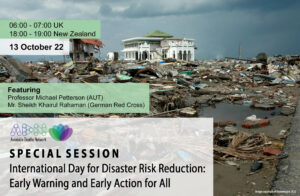
On Thursday 13 October 2022, Avoidable Deaths Network (ADN) celebrated International Day for Disaster Risk Reduction (IDDRR), an event promoted by the United Nations General Assembly to encourage a global culture of disaster risk reduction.
The theme this year was ‘greater investment in expanding early warning and early action for all’, aligning with Target G of the Sendai Framework: “Substantially increase the availability of and access to multi-hazard early warning systems and disaster risk information and assessments to people by 2030.” (UNDRR, 2022).
We hosted a one-hour Special Session in which Professor Michael Petterson (Auckland University of Technology) and Mr. Sheikh Khairul Rahaman discussed early warning and early action for all.
#Earlywarningforall #DRRDay #citizensforchange #ourstochange #avoidabledeaths #UNDRR #SendaiTargetA #SendaiTargetB #SendaiTargetG #KansaiUniv
Timetable
| Session Title | Speaker |
| Housekeeping | Mr. Julian Coetzee |
| Welcome Speech | Dr. Hideyuki Shiroshita |
| Introducing ADN and International Day for Disaster Risk Reduction | Dr. Nibedita Ray-Bennett |
| Early warning case studies for cyclones and tsunamis in the Pacific Islands region | Professor Michael Petterson |
| Value of saving lives through early warning and early action | Mr. Sheikh Khairul Rahaman |
| Q&A | Dr. Nibedita Ray-Bennett |
| Closing Ceremony | Dr. Hideyuki Shiroshita |
Chairs and Speakers
An Associate Professor in Risk Management, Programme Director, External Examiner and Fellow of the Higher Education Academy. Nibedita joined the University of Leicester in 2012. Before joining Leicester, she had worked at Warwick, Northumbria and Cranfield Universities. Nibedita is a sociologist specialising in disaster risk reduction (DRR) and international development. Her research interests include: caste, class and gender in multiple disasters, micro-finance, health security for disaster resilience, securitisation for disaster risk management, reproductive health in disasters, and theory of justice in disaster risk reduction to avoid deaths. Nibedita is the author of Caste, Class and Gender in Multiple Disasters (2009, VDM Verlag) and Avoidable Deaths (2017, Springer Nature). Nibedita believes that by developing the capacities of actors, organisations and of general public, we can avoid disaster deaths.
An Associate Professor at Graduate School and Faculty of Societal Safety Sciences, Kansai University in Japan. He is also an affiliate member of the Disaster and Development Network (DDN) at Northumbria University, UK. His research interests are in the areas of disaster education, risk communication and Science, Technology and Society (STS). To overcome the conventional disaster education, which involves one-way knowledge transmission from experts on disaster risk reduction (DRR) to non-experts, the definition of disaster education is revisited from both DRR and pedagogical perspectives. He has also been served as an advisor of disaster education to several governmental committees. Currently, he is the chairperson of Osaka Prefectural committee for promoting safety and disaster education.
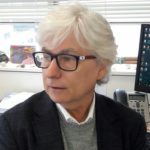
An Advisory Board Member for the ADN, Mike is a geoscientist, currently at Auckland University of Technology, NZ. He previously held Professorial/Senior Leadership positions at the British Geological Survey, University of Leicester, UK, Secretariat of the Pacific Community (SPC), and University of the South Pacific (Fiji). Much of Mike’s career has been involved with international development particularly in areas such as institutional strengthening, capacity building, training & education, & technical geoscience. Experience in South & Central Asia, the Pacific Islands and the Caribbean/South America has provided firm foundations for the accrual of knowledge in ‘interconnected geoscience’: how geoscience alongside other disciplines, with appropriate world views, can add the greatest value to development-related interventions.
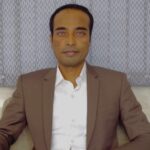
A seasoned humanitarian actor with around 14 years of professional experience. Khairul has a long track record of working in climate change adaptation, resilience building, multi-sector humanitarian response and Forecast-based Financing programs in India, Nepal, Bangladesh, Myanmar, Sri Lanka, and Thailand. He is experienced in working with government and other stakeholders and designing humanitarian policy frameworks at the national and state level. Currently, he is working on anticipatory action aimed at anticipating the disaster and supporting the community with early action to reduce the loss of lives and livelihoods of the vulnerable population.
Photo
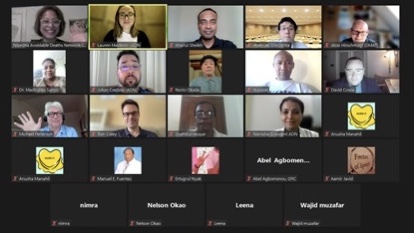
YouTube
Q&A
Due to time constraints during the Q&A, the following questions were answered by Professor Michael Petterson after the session:
- In relation to early warning text messages. How do people sign up for these? How are these messages then conveyed to hard to reach communities?
– Re using text messages for early warning. In most countries the government has your phone number somehow. In NZ for example you have to have a tax number and to get this you have to give a phone number (or all who have a phone) and the national disaster management organisation uses these data to send out early warning messages. If you make this system ‘voluntary’ many people will be missed out. You cant rely on one method…so radio, TV, internet, etc all used too. IN remote areas and poorer areas of course systems must be re-thought through and made appropriate for them.. IN central Java for example village shave their own village level early warning systems for landslides and volcanic eruptions…which are designed by them/for them. - Any political/social obstacles in integrating indigenous and scientific knowledge in early warning systems and best way to manage the same?
– The main obstacle to integrating indigenous/local knowledge is a bias/prejudice towards other forms of knowledge. The best way to get over this obstacle is to is to challenge this viewpoint. Also to work with local people and document as best ‘outsiders’ can what the essence of their knowledge is and promote this with disaster management offices. The trend is moving in the greater respect for various world views area. I attach papers I have been involve din that use/highlight indigenous knowledge as a factor in DRM and some other papers/reviews on the subject
In addition to the written answers, Professor Petterson has shared four relevant articles.
- Hagen, K. Petterson, M.G. Humphreys, D. Clark, N. (2021) ‘Why Disaster Subcultures Matter: A Tale of Two Communities: How and Why the 2007 Western Solomon Islands Tsunami
Disaster Led to Different Outcomes for Two Ghizo Communities’, Geosciences, 11 (387). Available At: https://www.mdpi.com/2076-3263/11/9/387 - Hadlos, A. Opdyke, A. Hadigheh, A.S. (2022) ‘Where does local and indigenous knowledge in disaster risk reduction go from here? A systematic literature review’, International Journal of Disaster Risk Reduction, 79. Available online at: https://www.sciencedirect.com/science/article/pii/S221242092200379X?via%3Dihub
- Dube, E. Munsaka, E. (2018) ‘The contribution of iindigenous knowledge to disaster risk reduction activities in Zimbabwe: A big call to practitioners’, Jàmbá: Journal of Disaster Risk Studies, 10(1), a493. https://doi.org/10.4102/jamba.v10i1.493
- Petterson, M.G. Cronin, S.J. Taylor, P.W. Tolia, D. Papabatu, A. Toba, T. Qopoto, C. (2003) ‘The eruptive history and volcanic hazards of Savo, Solomon Islands’, Bulletin of Volcanology, 65, pp.165-181. Available At: https://link.springer.com/article/10.1007/s00445-002-0251-0
If you can’t access the articles through the links provided, please email contact@avoidable-deaths.net.
Impact
Positive comments and feedback from speakers and participants:
- “A very special day for IDDRR. This was an excellent insight into how every country should prepare for early warnings and disaster risk reduction. Thankyou all for attending” – Dr Madhulika Sahoo
- “The session over ran because the debate and questions were so lively and animated. Thankyou” – Dr Nibedita Ray-Bennett
- “”We have a long way to go to equalise the knowledge domains on disaster risk across the world” – Professor Michael Petterson
- “It is important that disaster education occurs in schools in terms of early warning alert and message propagation. The media have an important role to play”. – Professor Norio Okada
- “It is important to continue working in anticipation of disasters, rather than reacting” – Mr Sheikh Khairul Rahaman
- “I am currently working on a PhD in relation to early warning systems in order to build resilience amongst banana farmer in Uganda and would like to collaborate” – Participant 1
- “This was an excellent session thank you” – Participant 2
- “That’s an interesting point, language as a barrier” – Participant 3
Blog
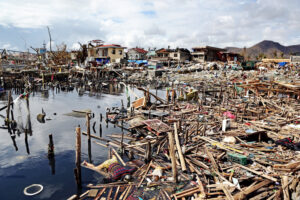
Copyright of Shutterstock 2022
